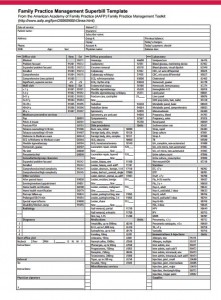by Dan Haley, VP of Government and Regulatory Affairs
See full article here.
Is the October 2015 deadline real this time? Are the feds going to punt again? They aren’t ever going to pull the trigger on ICD-10, right?
All reasonable questions, especially after the October 2014 deadline — supposedly a hard-and-fast date — was unceremoniously kicked down the road by a year.
When it comes to ICD-10, providers fall generally into two categories: Those who actually invested time and money to be ready for October 2014, and, having been burnt once badly, are leery of approaching the ICD-10 stove again. Then there are providers who feel validated that they had correctly bet the feds would blink — and may be more comfortable making that bet again next year.
The policy meteorologists uniformly predicted stormy weather. Yet a whole lot of people went outside without an umbrella and ended up enjoying a beautiful, sunny day. Why shouldn’t the same scenario play out again in 2015?
Despite all of the time I spend in the company of federal health IT policymakers, I have precious little insight to offer. The people in DC who are in charge of the transition are emphatic, both in public and behind closed doors: this time, they say with uniform certitude, the deadline is real. Count on it. Tomorrow the sun will rise in the east, this winter the New England Patriots will make the playoffs (hey, I’m in Boston), and in October 2015, the nation will switch over to ICD-10.
Considering past performance as an indicator of future action, skeptics can certainly be forgiven for their lack of faith. So how can we at athenahealth say, with a straight face, we think this thing might just be real this time? A few reasons:
- The 2014 delay was almost certainly political. With the nation just barely over the calamitous roll-out of healthcare.gov, there was no way the White House would implement a massive code switchover that could well have rendered a majority of the country’s providers temporarily unable to be paid for their services, just one month before the midterm elections. Unequivocal statements by everyone including Centers for Medicare & Medicaid Services (CMS) head Marilyn Tavenner notwithstanding, this year’s delay was entirely predictable. 2015, on the other hand, is not an election year. Even if providers are not appreciably better prepared for ICD-10 next year than they were in 2014, it may not matter — chaos is more politically palatable in an off year.
- The recent Ebola scare lends a new degree of urgency to upgrade U.S. systems to match the code set already in use in much of the world, to better enable the disease identification and tracking necessary for a global health crisis response. Nothing motivates change in Washington like an emergency.
- Of course, there is the Affordable Care Act. With the rolling implementation of the law, provision of and reimbursement for care is getting more complex. At some point, the continued use of a code set rolled out in the Watergate era, and long-retired in much of the modern world, becomes untenable.
Regardless of the continued uncertainty surrounding the October 2015 deadline, at athenahealth we are encouraging providers to get ready for ICD-10 and are preparing and testing on our clients behalf. Our cloud platform had our entire provider base ready well before October 2014, and will have it ready again months before October 2015, at no additional cost to those clients. And we are working hard — again — to make the transition as easy and painless as possible.
Like meteorologists, political prognosticators are often wrong, sometimes radically so. Even though we sometimes get to enjoy unexpected blue skies, eventually it pays to dress for stormy weather. DC is again confidently predicting a switch to ICD-10 on October 1, 2015, and there is no upside to bet against that happening. No matter when it does, athenahealth will be holding the umbrella for providers.
